Koh Lipe is one of the islands in the Adang Archipelago in the Andaman Sea, located in the south of Thailand, near the border with Malaysia. It is part of the Tarutao Marine National Park, and its inhabitants are the Chau Leh, an ethnic group of nomads with a life connected to the sea, more commonly known as sea gypsies.
If you are traveling to Thailand, we recommend making a stop to visit one of the country’s most beautiful islands.
Koh Lipe is a very small island. You can walk from one end to the other without getting too tired, especially if you avoid the hottest parts of the day. The island has several features that make it a paradise destination. Its three main beaches are stunning: Pattaya Beach and Sunrise Beach have powdery white sand, turquoise waters, and coral beds where you can observe marine life with just a pair of goggles and a snorkel, without needing to venture too far.
The island’s small size naturally limits tourist access, giving it a more relaxed atmosphere compared to some of its more famous neighbors. However, this limit may soon be exceeded, if it hasn’t already been. (We offer some reflections on this at the end of the article.)
In Koh Lipe, there are two seasons:
Travel Tip: Check out our article on the best time to visit Thailand for month-by-month climate information.
To begin with, we always recommend getting good travel insurance Thailand. This can save you a significant amount on medical expenses and, most importantly, ensures that the insurance covers the costs upfront, so you don’t have to pay out of pocket.
In the previous article, we go into more detail about healthcare in Thailand, as well as tips on how to get the best insurance (and save money).
Nowadays, finding hotels, guesthouses, or restaurants in Thailand with free Wi-Fi is pretty common. However, there are still those who prefer (or need) to stay connected at all times.
That’s why we’ll show you how to get an eSIM Thailand card with internet— now also available with unlimited data.
Depending on your location, there are various ways to reach the island.
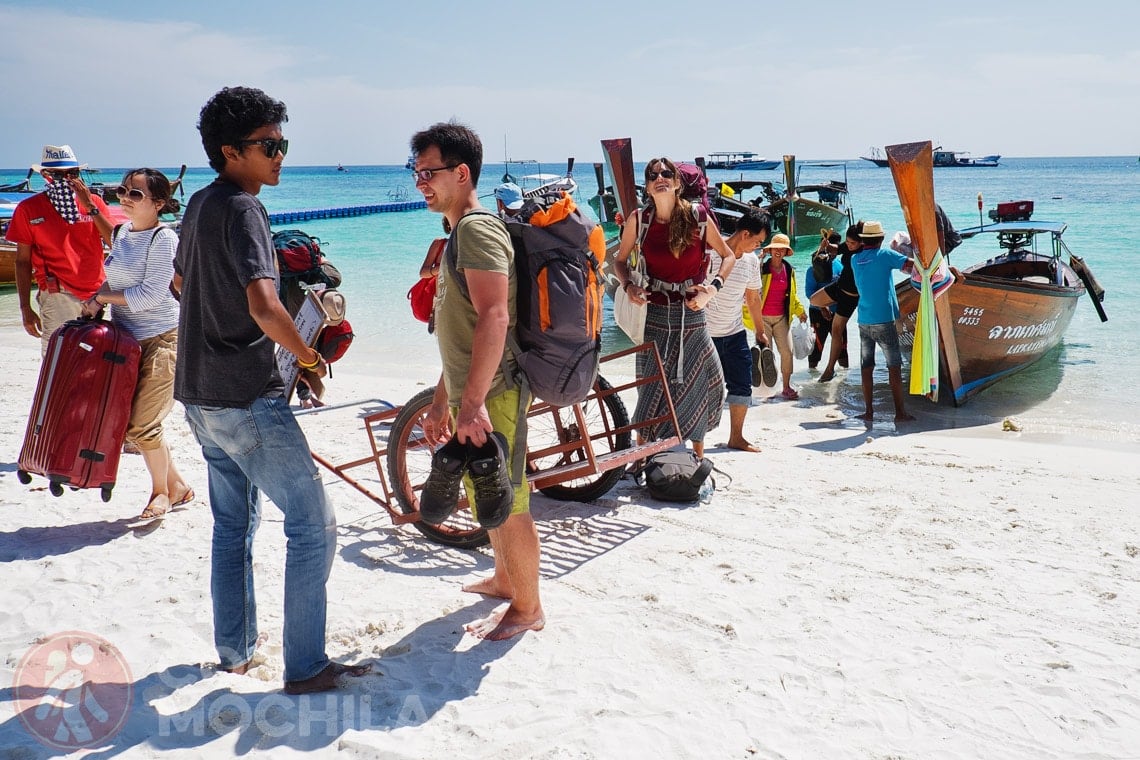
From Koh Lanta, Koh Phi Phi, or Phuket, you can reach Koh Lipe by ferry between November and April. This is the most convenient method as it requires no additional transfers, though the journey can be long and slow, so patience is essential.
You can buy a combined ticket at an agency that includes:
Tip: We have previously written an article on how to get to Koh Lipe from Bangkok, which may be helpful.
The online platform 12go.asia allows you to quickly and easily book buses, trains, or ferries in Thailand. Check the link above for more information.
If you arrive by plane, you can be picked up and transferred to Pak Bara port, then take a speedboat to the island. AirAsia offers a flight package to Koh Lipe that includes all transfers.
If you book a flight to Hat Yai on your own or with another airline, as we did the second time we visited, boat companies like Bundhaya Speedboat offer similar services. These boats can be a bit uncomfortable due to their bouncing motion, but Bundhaya’s boats are larger, faster, and more effective.
Tip: Here is a link to search for flights to Hat Yai on your own and potentially save money.
Located in the southwest of the island, Pattaya Beach is where we first arrived, as the pier is in the sea and can shift between beaches depending on the season. Sometimes it is located at Pattaya, and other times at Sunrise.
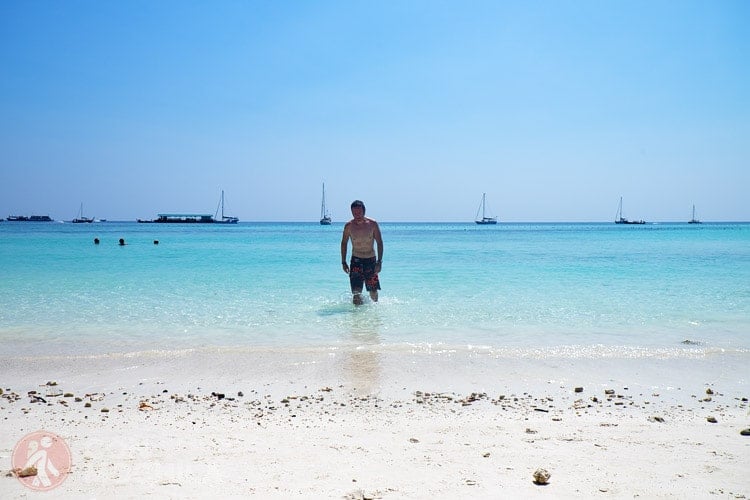
The sand at Pattaya Beach is fine and soft, and it doesn’t get too hot even in the midday sun. The best part is that you can find shade under the many trees near the shore, though the beach can get crowded during high season.
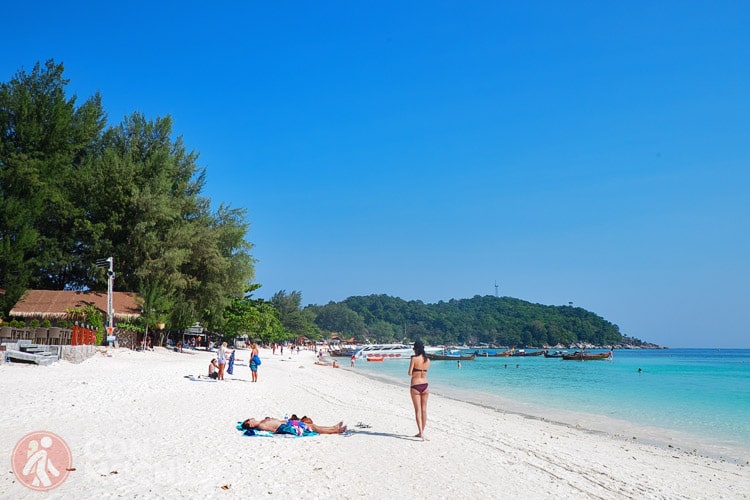
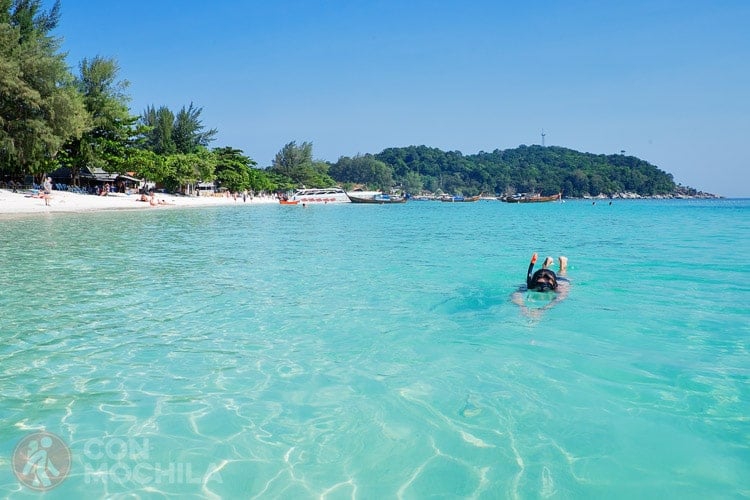
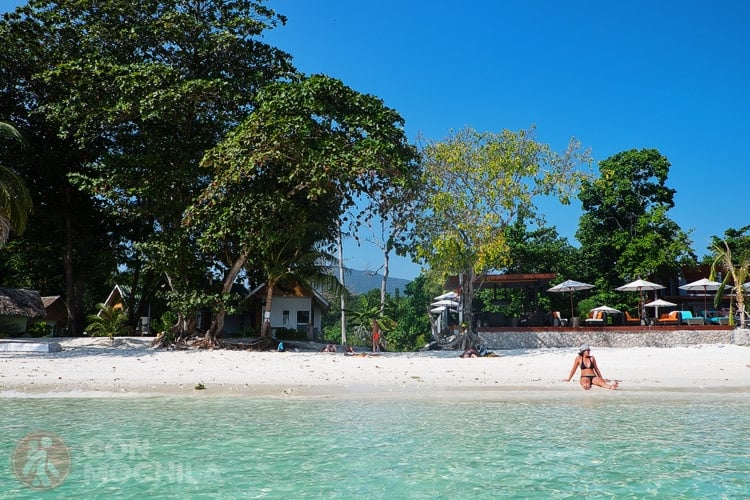
The northwest beach is simply spectacular. Like its neighbor, Sunrise Beach features white sand and turquoise waters. A few years ago, there was a stunning sandbar to the north of this beach, offering a peaceful swimming spot with a view of the neighboring island of Koh Adang. However, this sandbar has since disappeared.
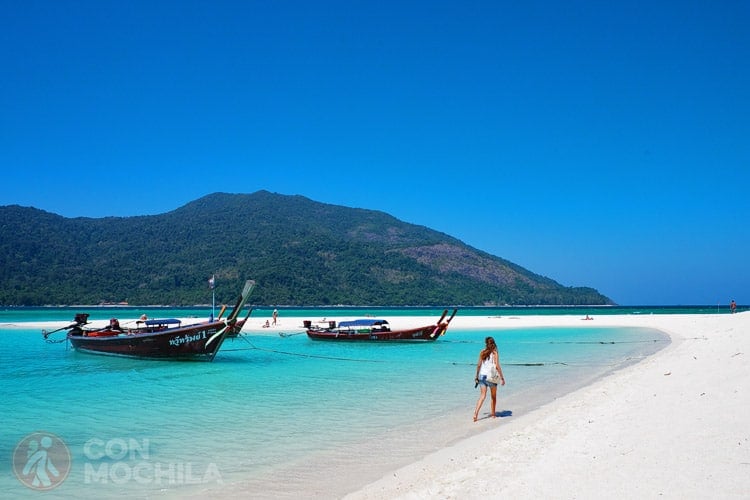
There are also a couple of small islets you can reach by snorkeling to marvel at the beautiful seabed.
Just a few meters from the shore, you can see anemones with clownfish swimming around, so don’t forget your snorkel gear!
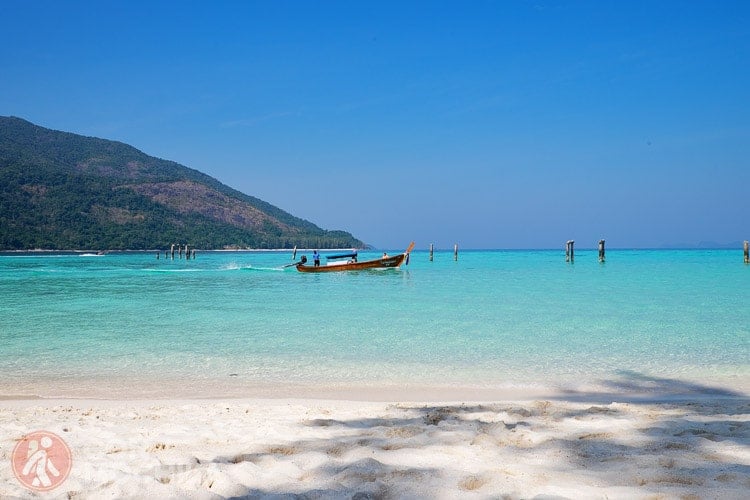
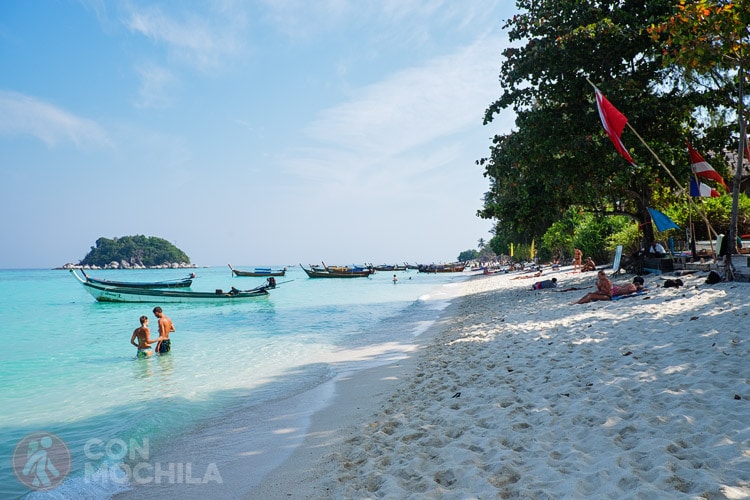
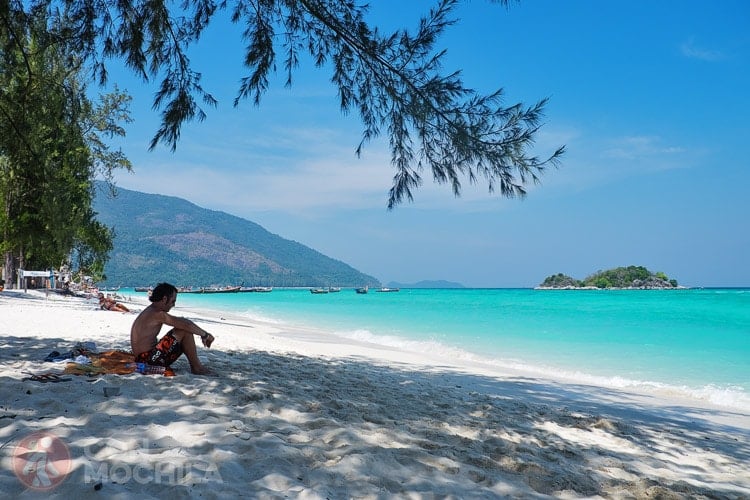
Famous for its sunsets, Sunset Beach is considerably smaller than the other two main beaches and tends to go somewhat unnoticed.
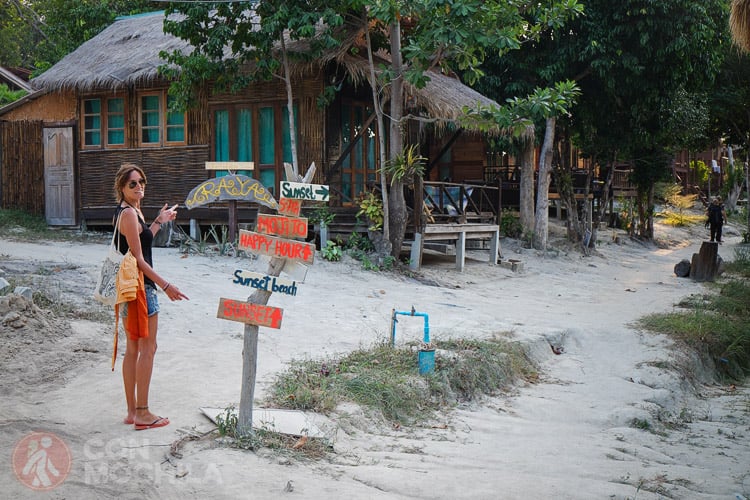
At first glance, it might not seem as attractive, but the atmosphere changes completely in the afternoon when people gather on the sand with their drinks to watch the sunset and bid farewell to another day of vacation.
It’s worth visiting when the weather is not ideal for the other beaches, and you can enjoy a relaxing sunset experience.
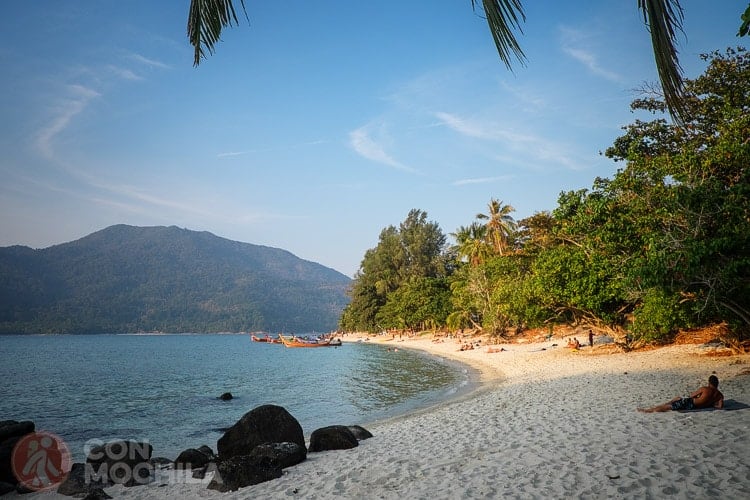
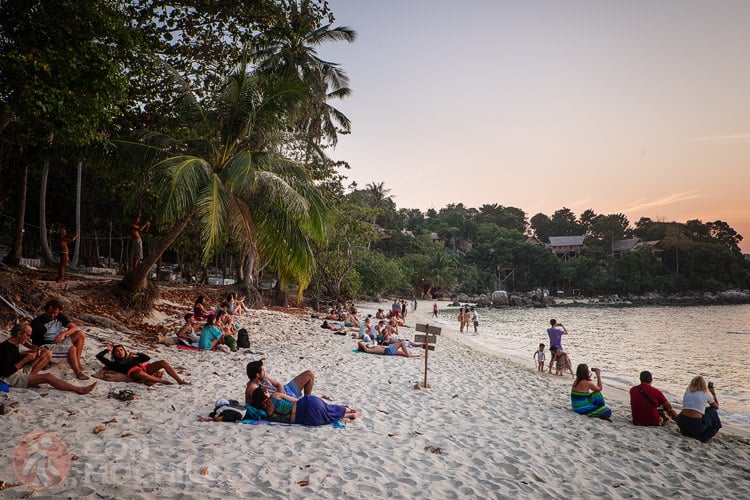
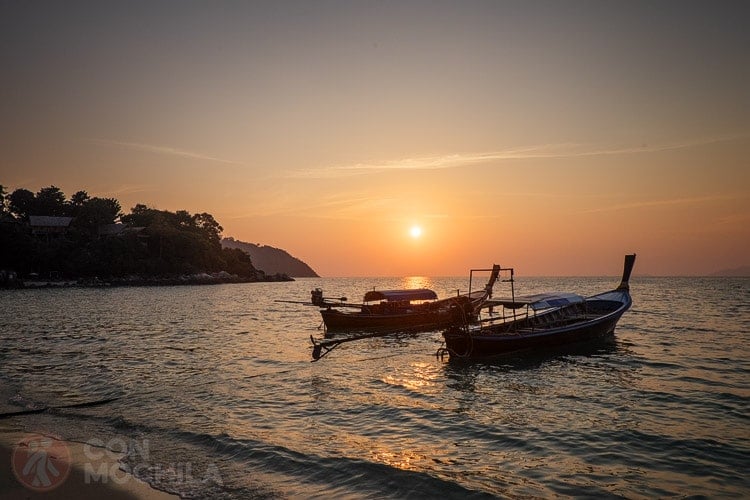
While exploring Koh Lipe, you might come across small, less-visited beaches where you can swim in peace or relax on your towel and read without interruption.
A good example is the beach where Paradise Camping is located, where we even managed to have a barbecue (thanks to a tip from Victor and Luisa).
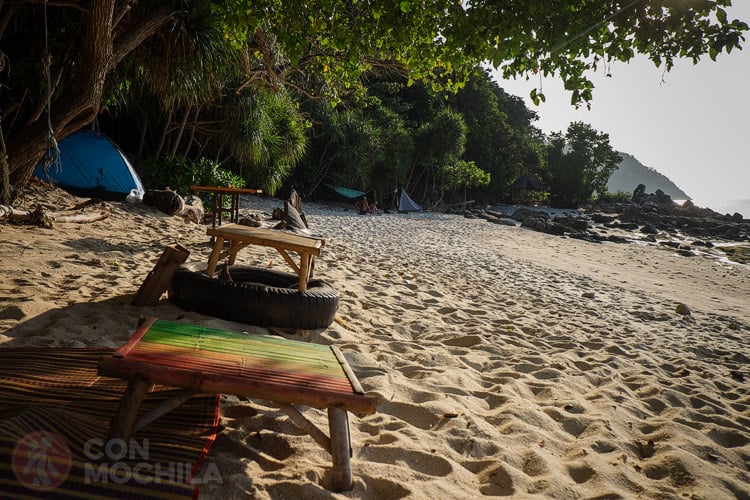
A barbecue in Koh Lipe isn’t just about eating; it’s also about enjoying the sunset almost alone, with only the sounds from a basic Chau Leh beach bar as company.
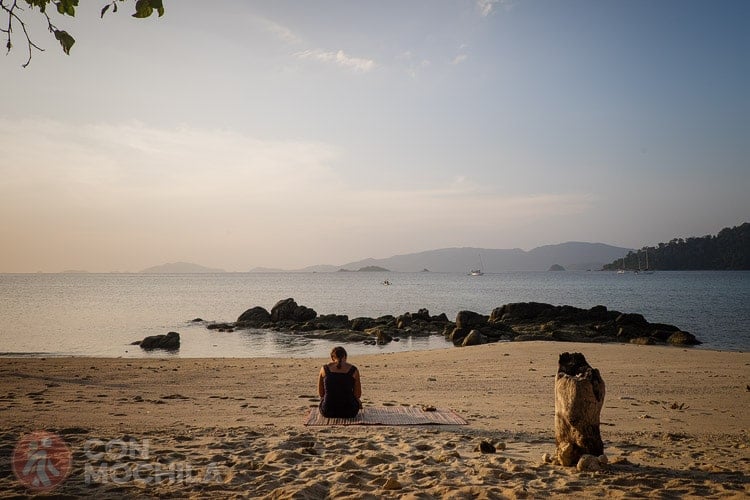
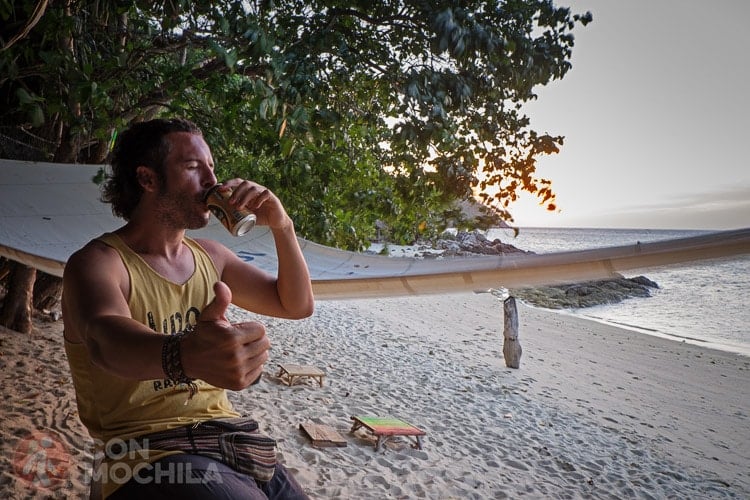
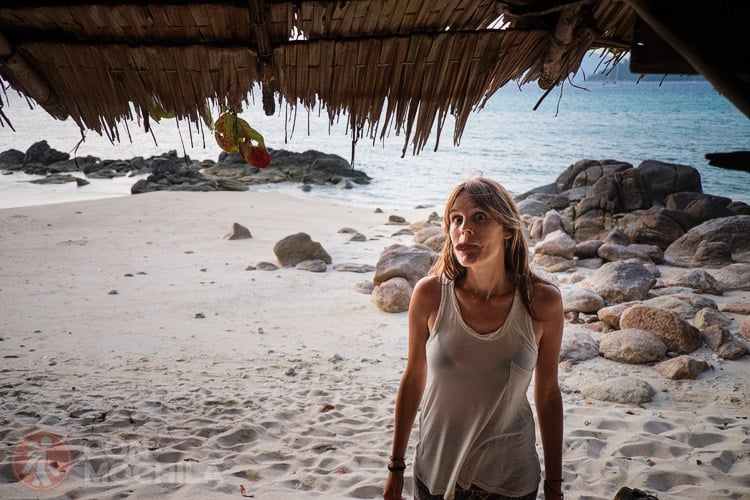
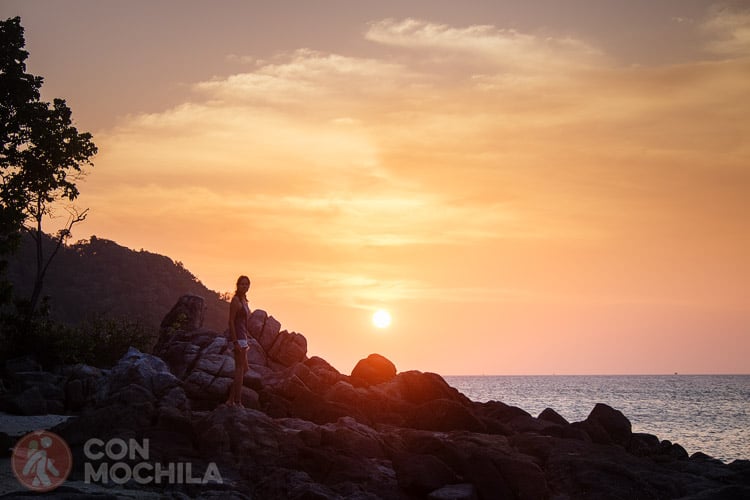
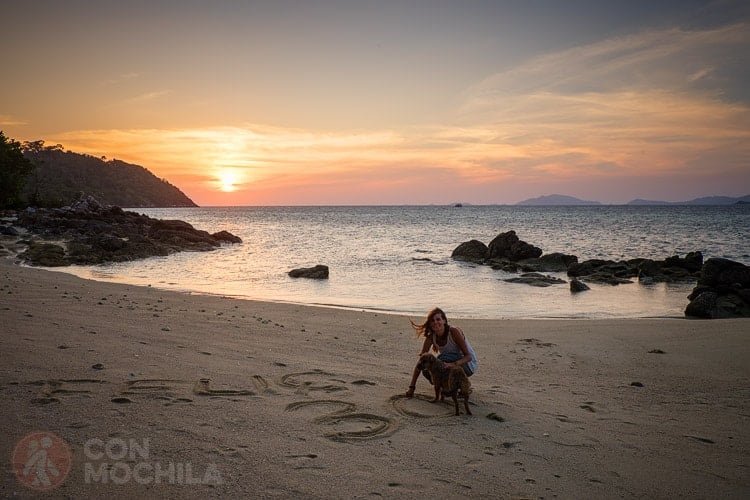
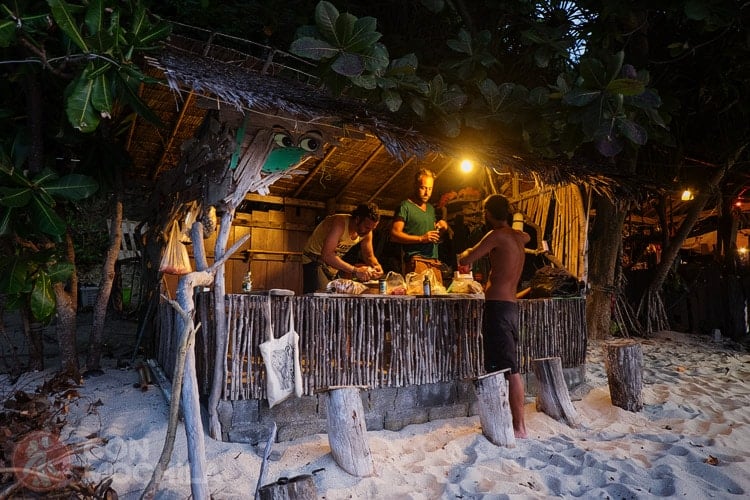
Although Koh Lipe remains a quiet island compared to its party-centric neighbors, there are plenty of activities if lounging on the sand is not enough for you.
Enjoy the beauty of the sea by snorkeling or exploring the seabed with one of the many diving schools available.
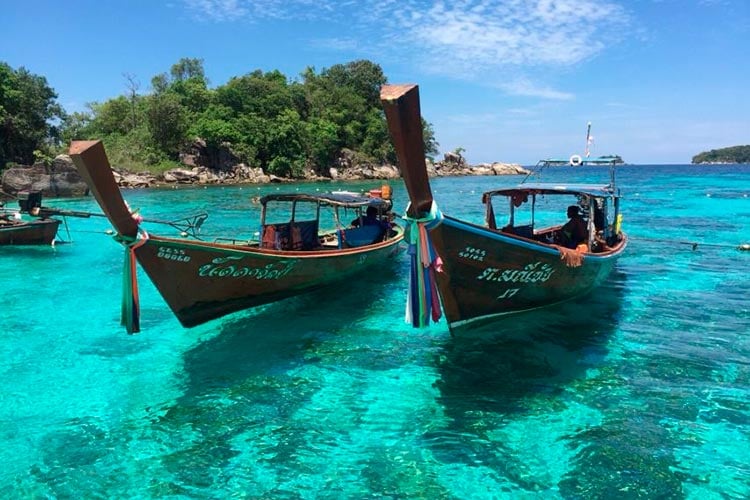
You can also book excursions on the famous longtail boats and spend the day visiting neighboring islands on a Chao Leh boat.
Here are some suggestions:
For those who want to go a bit further and help keep the archipelago clean, you can become a “Trash Hero” for a day. This initiative aims to keep the islands free of waste by organizing weekly clean-up events, where volunteers are rewarded with a meal.
Accommodation options on Koh Lipe are quite varied and often a controversial topic. You can find a range of options, depending on what you are looking for, from tents costing 300 THB to luxurious cement cabins with all the amenities. The price depends on whether you want to stay near the sea or in a mountain area.
We chose a simple bamboo hut at Cozy Cove, owned by a Chao Leh named Narine, located in a quiet mountain area near Sunset Beach.
We have listed accommodations by price range (from cheapest to most expensive) so you can choose one that suits your budget.
Exploring the underwater world is a fascinating yet sometimes daunting activity. Simply putting on a diving mask and peering beneath the surface reveals a whole new world of colors and unfamiliar life forms.
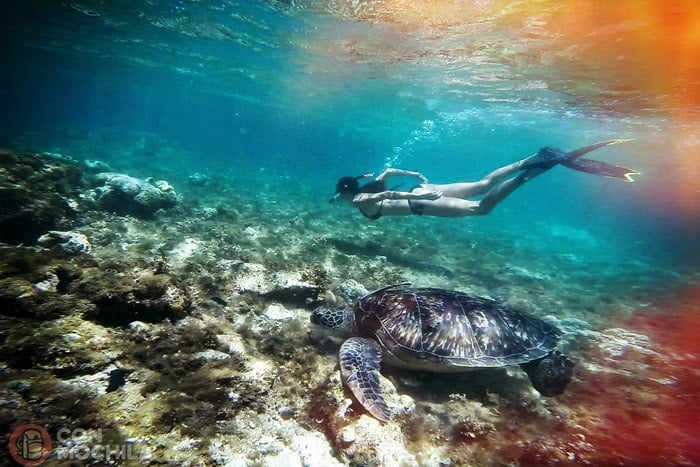
However, this world needs to be cared for and respected. If you’re planning to include snorkeling in your trip and want to ensure your presence doesn’t negatively impact the ecosystem, consider learning about responsible diving practices (whether with or without a tank).
Check this colorful map of Koh Lipe with all the ways to get from one part of the island to another, with the beaches and their snorkeling spots, restaurants, some accommodations, etc. Click on it to see it bigger.
Restaurants are available almost everywhere, both on the beaches and on the famous Walking Street. While recommending specific places is difficult, there are modest eateries where you can enjoy Pad Thai at reasonable prices. Just take a short walk away from the busiest areas.
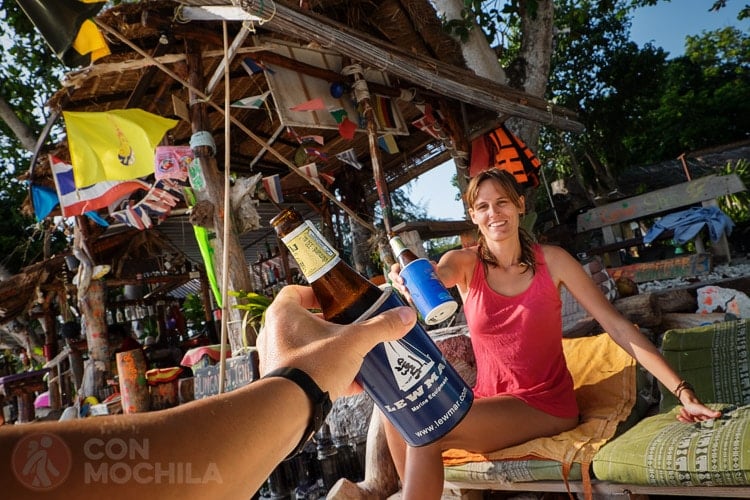
You can easily find a beer on any beach or enjoy a refreshing coconut from one of the street food stalls.
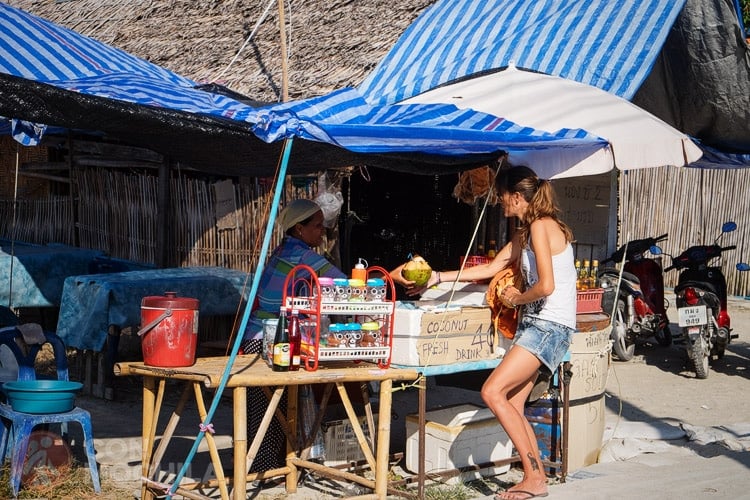
The island’s small size makes it possible to walk from one end to the other. However, keep in mind that there are some hills, unpaved roads, and it can be very hot at midday.
Koh Lipe also has motorbike sidecars that can transport you when you have luggage or are too tired to walk. Some accommodations offer their own transportation to and from the pier.
Click on the image and it will take you to a new Google Maps window with all the points of interest to travel around Koh Lipe.
According to locals, Koh Lipe was once a paradise before the tourist boom. The island’s limited access due to scarce transportation options and minimal infrastructure meant that only the most adventurous or resilient travelers could reach it.
If you’re looking for a semi-deserted island, know that Koh Lipe is no longer like that. If you visited years ago and return expecting the same experience, you might be disappointed.
Nevertheless, the island still has much to offer, although it is uncertain whether it will be preserved or face total collapse. In our opinion, tourists have significant power to preserve destinations as they are. We bear a great responsibility to ensure that beautiful locations remain as they are or avoid becoming a “Marina d’Or, holiday town.
Our choices determine demand, demand dictates supply, and that’s where unscrupulous practices can take over, destroying everything in their path. The current government policies also warrant discussion; perhaps more could be done to limit construction or regulate exploitation rights, though this seems complex.
This is not to say you should avoid Koh Lipe. Everyone has the right to visit such places but also has a duty to care for them and not exploit them as if they exist solely for our enjoyment.
Let’s be honest: some options are less sustainable than others. If we want to enjoy a unique destination, we might need to forgo certain luxuries that ultimately drain resources and generate waste.
There are still remnants of what Koh Lipe used to be, such as basic Chao Leh-owned cabins not necessarily facing the sea, or campsites with simple tents on the sand. Some beaches, lacking sophisticated beach bars, are still less crowded and offer magical moments. However, this is not the norm.
These reflections are not a debate about tourists versus travelers but about respecting the places we visit and the people who depend on them. It represents our vision of what we understand as sustainable tourism.
Perhaps if we approached holidays differently, Koh Lipe might not have reached its current state, as many other destinations have; because “the usual suspects”, with the help of “Mr. Money”, would not have made a fortune at the expense of the island and its inhabitants. Or perhaps the mere presence of tourism inevitably leads to disaster. Sometimes it’s hard to know what to think, but I’m sure we would have preferred to experience the Koh Lipe of 15 years ago.
An article in the Spanish newspaper El País discusses the tourist invasion of the island and may provide further food for thought. Let everyone draw their own conclusions.
ACTIVE CAMPAIGN !
Until december 1st, you can get an automatic 15% discount on your Heymondo travel insurance.